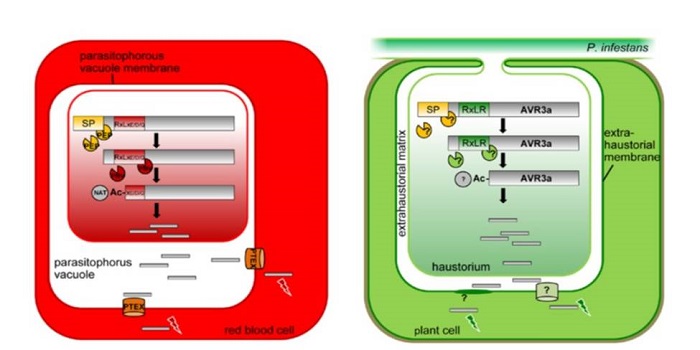
The RxLR motif of the Phytophthora infestans effector AVR3a is cleaved before secretion ($)
0 Comments
/
RxLR effectors are proteins secreted from pathogens that enter the cells of the host and support the effectiveness of the pathogen in various ways. Their name refers to the sequence RxLR (Arg-Xxx-Leu-Arg). Previously, this sequence has been thought to be involved the effector’s entry into the host…

Bacterial biosensors for in vivo spatiotemporal mapping of root secretion
Biosensors are powerful tools that provide readouts for various small molecules so that they can be detected and located. Pini et al. have developed a set of biosensors for expression in bacteria (Rhizobium leguminosarum) that reveal some of the small molecules (including key sugars, polyols, organic…
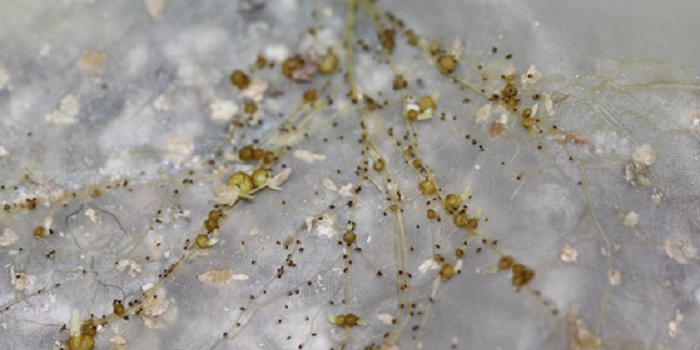
Striga hermonthica – a beautiful but devastating plant…
This week’s post was written by Caroline Wood, a PhD candidate at the University of Sheffield.
When it comes to crop diseases, insects, viruses, and fungi may get the media limelight but in certain regions it is actually other plants which are a farmer’s greatest enemy. In sub-Saharan Africa,…
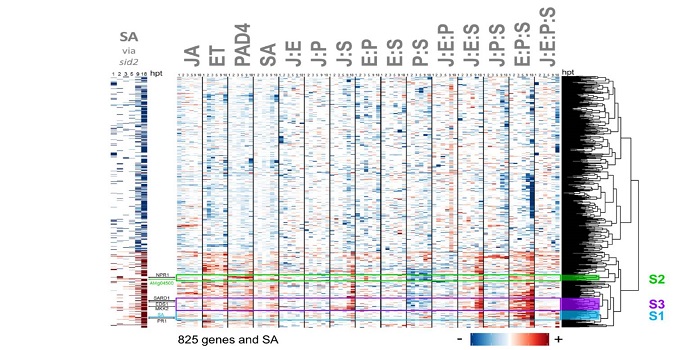
The highly buffered Arabidopsis immune signaling network conceals the functions of its components
Classic genetic approaches have been instrumental in identifying genes that control developmental and defense networks, but as Hillmer et al. point out, analysis of single mutants is complicated by network buffering. They describe network buffering as occurring when the effect of losing a gene’s function…
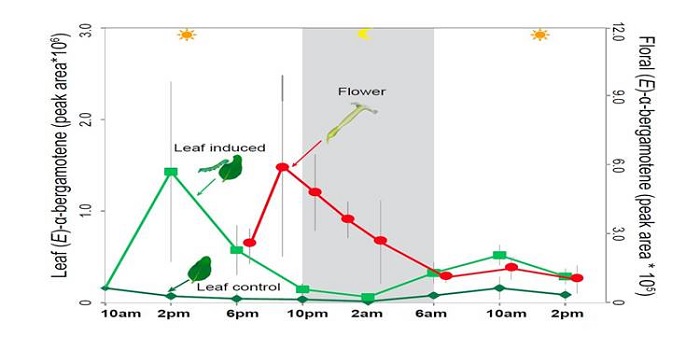
When pollinators are also herbivores ($)
The interaction between wild tobacco (Nicotiana attenuata) and the moth Manduca sexta, which is both a pollinator and a herbivore, is a model for plant/ arthropod interactions and has revealed insights into chemical signals and defenses. Zhou et al. show that a single compound, the sesquiterpene (E)-α-bergamotene,…

Review: Communication in the phytobiome ($)
An old ad stated, “Without chemicals, life itself would be impossible,” but it’s only more recently that we’ve begun to understand the importance of semiochemicals – chemicals produced for communication. Leach et al. pull together insights from chemical ecologists, soil scientists, plant pathologists…
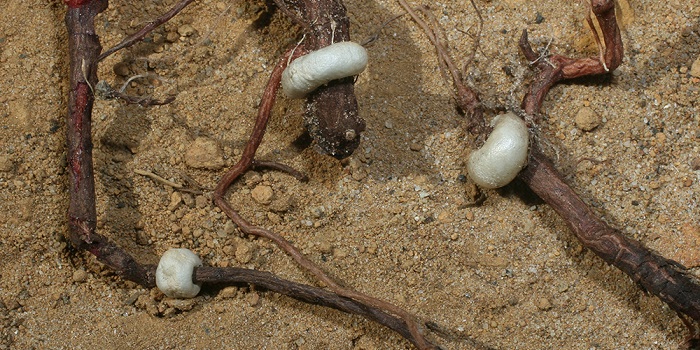
Australia's giant parasitic Christmas tree, with blades sharp enough to cut telephone wire
Here's a fascinating plant in honor of Fascination of Plants Day #PlantDay
By Tim Low, published in Australian Geographic
AUSTRALIA HAS A PARASITE believed to be the largest in the world, a tree whose greedy roots stab victims up to 110m away. The Christmas tree (Nuytsia floribunda) has blades…

Strigolactone-Gibberellin Cross Talk
Strigolactones Root parasitic weeds, such as broomrape (Orobanche spp.) and witchers weed (Striga spp.), are harmful plants in sub-Saharan Africa, the Middle East, and Asia that maintain seed dormancy in the absence of host plant. Both parasitic plant species require germination stimulants released from…
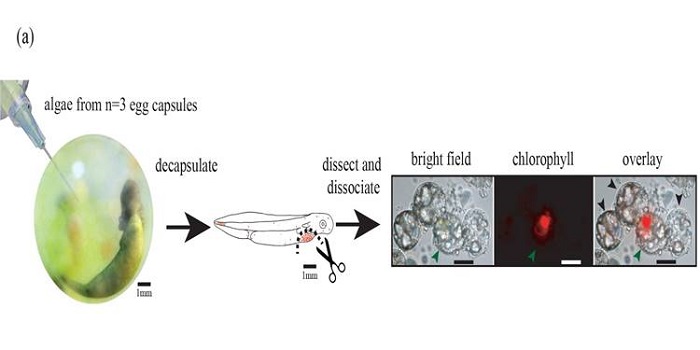
Transcriptome analysis illuminates the nature of the intracellular interaction in a vertebrate-algal symbiosis
Chloroplasts are of course the descendants of ancient endosymbiotic cyanobacteria. While there are examples of photosynthetic bacteria or algae living in animal tissues (e.g., anemones and corals), vertebrate endosymbiosis is rare. One exception is the interaction between a salamander Ambystoma maculatum…

